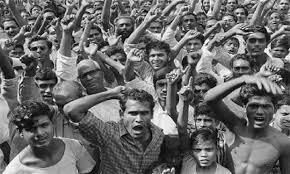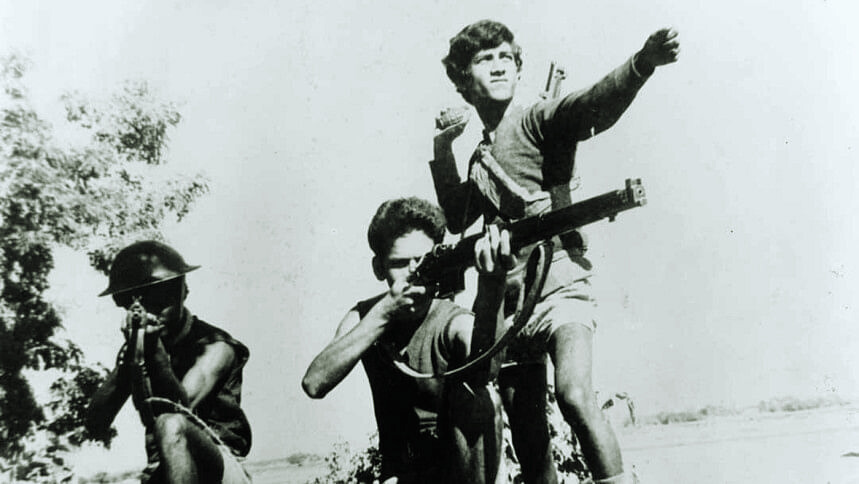Liberation War of Bangladesh The Heroic Struggle of 1971
Liberation War of Bangladesh: The Struggle, The Sacrifice, The Spirit of a Nation
The Liberation War of Bangladesh in 1971 was not just a historical event; it was a revolution that reshaped an entire subcontinent. It was the ultimate expression of a people’s yearning for dignity, language, and justice. As Bangladesh emerged from the blood and ashes of war, the world witnessed the birth of a nation born out of courage, sacrifice, and unwavering resolve.
In this article, we delve deep into:
Why the Liberation War of 1971 began
The bravery of Mukti Bahini and civilians
India’s critical role in the victory
The cost of war: from genocide to victory
The lasting impact on Bangladesh’s identity and future
The Origins: Seeds of Rebellion Planted in Injustice
The road to independence was not sudden. It was rooted in decades of political neglect, economic disparity, and cultural suppression imposed by West Pakistan on East Pakistan (now Bangladesh). Despite being the majority in population, Bengalis were treated as second-class citizens.
Key events that ignited the movement:
Language Movement (1952): The attempt to impose Urdu as the sole state language sparked mass protests. The martyrdom of students on February 21 became a symbol of linguistic identity.
Economic Exploitation: East Pakistan contributed more than 50% to Pakistan’s economy, yet received minimal development aid.
1970 General Election: Sheikh Mujibur Rahman’s Awami League won a majority but was denied power by the West Pakistani rulers.
March 25, 1971 – Operation Searchlight: The Pakistan Army began a night of genocide in Dhaka, targeting students, intellectuals, and civilians. That brutal crackdown triggered the Liberation War.
Declaration of Independence and the Formation of Mukti Bahini
On March 26, 1971, Bangladesh’s declaration of independence was announced, and the people rose in revolt. While Sheikh Mujibur Rahman was imprisoned, the Mujibnagar Government (Bangladesh government in exile) took charge and mobilized the resistance.
Mukti Bahini: The Backbone of the Freedom Fight
The Mukti Bahini, or Liberation Army, was formed with:
Defectors from the Pakistan military
Civilians including farmers, students, and professionals
Guerrilla fighters trained in India
They executed strategic attacks, sabotaged Pakistani operations, and disrupted enemy communication lines. Their fearless determination gradually tilted the war in Bangladesh’s favor.
The Role of India: A Turning Point in the War
India’s involvement was crucial in Bangladesh’s independence.
India’s support included:
Military training and weapon supply to Mukti Bahini
Shelter for more than 10 million Bangladeshi refugees
Political lobbying at the international level
Direct military intervention after Pakistan attacked India on December 3, 1971
India’s armed forces, in cooperation with Mukti Bahini, launched the “Bangladesh Liberation Campaign”—a 13-day war that led to Pakistan’s surrender on December 16.
Women in the Liberation War: Courage Beyond Words
Women played a vital and heartbreaking role in the war. Many served as fighters, intelligence agents, and nurses. They worked in refugee camps and supported the resistance in both public and underground capacities.
Sadly, over 200,000 women were victims of systematic sexual violence by the Pakistan Army and their collaborators (Razakar, Al-Badr, Al-Shams). These women, later honored as Birangona (war heroines), became symbols of strength and resilience.
Genocide and the Intellectual Massacre: Darkest Chapters
The war saw one of the worst genocides of the 20th century. An estimated 3 million people were killed. On December 14, 1971, just days before the surrender, Pakistani forces and their local allies executed hundreds of Bengali intellectuals in a bid to paralyze the nation’s future.
These included:
University professors
Journalists
Doctors and engineers
Artists and writers
This atrocity is remembered as one of the most heinous crimes against humanity, and December 14 is now observed as Martyred Intellectuals Day.
December 16, 1971: Victory Day of Bangladesh
On December 16, 1971, at the historic Racecourse Ground in Dhaka, the commander of Pakistan’s Eastern Command, Lt. Gen. A. A. K. Niazi, signed an unconditional surrender to the joint forces of India and Mukti Bahini.
Bangladesh was finally free.
The event was not just a military victory—it was the triumph of people’s will, unity, and identity.
The Aftermath: Building a Nation from the Rubble
The war left Bangladesh shattered:
More than 10 million refugees returned from India
Countless homes, schools, and institutions were destroyed
Economic infrastructure was in ruins
But the spirit of the people was unbreakable.
Under Sheikh Mujibur Rahman’s leadership, Bangladesh began its journey of rebuilding. The country focused on restoring agriculture, rebuilding homes, and drafting a new constitution based on democracy, equality, and secularism.
The Legacy of the Liberation War: More Than History
The Liberation War of Bangladesh was more than a political separation—it was the creation of a national identity built on the values of freedom, justice, language, and equality.
Its legacy includes:
March 26 as Independence Day
December 16 as Victory Day
A proud military tradition rooted in sacrifice
A growing economy rising from ashes
For the people of Bangladesh, the war serves as a reminder that their nation was not given—it was earned with blood.
Conclusion: Honoring the Spirit of 1971
As we remember the Liberation War of Bangladesh, we must continue to honor the sacrifices of the martyrs, freedom fighters, and ordinary people who gave their all. The stories of their struggle teach us about resilience, unity, and the power of the human spirit.
The war was not just about defeating a military power. It was about reclaiming dignity. It was about showing the world that even the oppressed, when united, can rise and change history.


